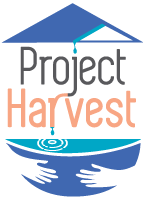What is Arsenic?Arsenic naturally exists in the Earth’s crust and can be found in sediments, soils, and groundwater. Arsenic may also be released into the environments via mining, ore smelting, and industrial use of the element.
What happens when Arsenic enters the environment?In the environment, people can be exposed to arsenic in two chemical forms:
- Inorganic: Varying amounts of this poisonous (toxic forms) form can be found naturally in geologic
materials (soils, rocks, aquifer materials) and in ground and surface water, which may also be impacted
by mining and industrial wastes and arsenical pesticides).
- Organic (arsenic compounds that contain carbon): Varying amounts of this non-poisonous (low-toxicity) form can be found in sources such as animals, plants, fish and seafood. Fish and shellfish can accumulate arsenic; most of this arsenic is in an organic form called arsenobetaine that is much less harmful.
How can Arsenic affect my health?Severe (acute) arsenic poisoning can cause vomiting, abdominal pain, and diarrhea. This can be followed by numbness and tingling of the extremities, muscle cramping, and death in extreme cases. Ingesting or breathing low levels of inorganic arsenic for a long time (chronic) can cause non-cancer health effects, like a darkening of the skin and the appearance of small “warts” on the palms, soles, and torso. Other non-cancer health effects linked to long-term ingestion of arsenic include developmental effects, diabetes, pulmonary disease, and cardiovascular disease. Ingestion of inorganic arsenic can increase the risk of skin cancer and cancer in the liver, bladder, and lungs. Inhalation of inorganic arsenic can cause increased risk of lung cancer.
Where can I get more information on Arsenic?
Important note: The use of SRB for assessment of contamination is very unique to this project. Though preliminary research suggests that SRB may be a strong indicator of fecal contamination, this has not been tested in harvested rainwater or in the American Southwest. In the third year of the project, we will compare the number of E. coli and Total Coliforms (for which there are standards) to the number of SRB (for which there are no standards) in each sample. We hope to discover that homeowners will be able to use a kit that identifies a non-pathogenic organism (SRB) to assess the quality of their harvested rainwater. This would be very exciting, given that at-home kits for microbial water quality assessment do not exist.
Results shown below the Method Limit of Detection (MLOD) were measured at a time when the instrument's ability to detect was better, which provided a lower MLOD than shown here.

